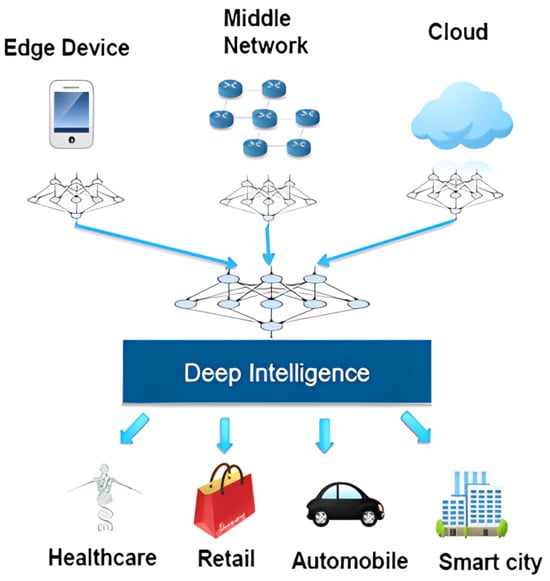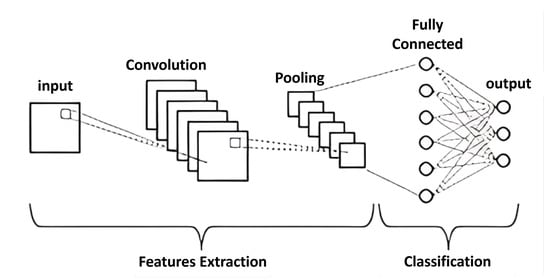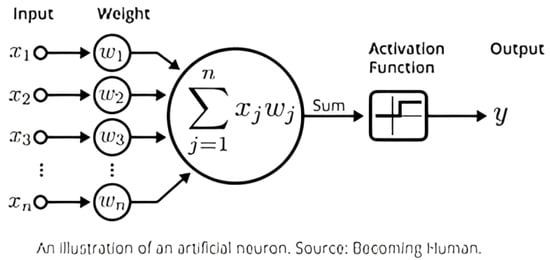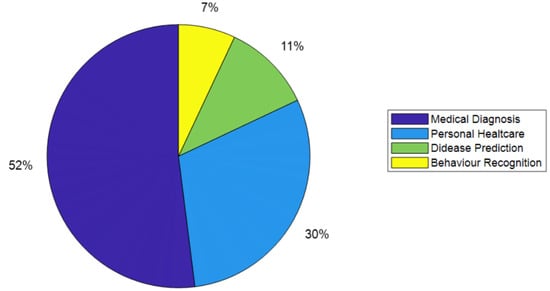The internet of things (IoT) has emerged as a pivotal technological paradigm facilitating interconnected and intelligent devices across multifarious domains. The proliferation of IoT devices has resulted in an unprecedented surge of data, presenting formidable challenges concerning efficient processing, meaningful analysis, and informed decision making. Deep-learning (DL) methodologies, notably convolutional neural networks (CNNs), recurrent neural networks (RNNs), and deep-belief
networks (DBNs), have demonstrated significant efficacy in mitigating these challenges by furnishing robust tools for learning and extraction of insights from vast and diverse IoT-generated data. This survey article offers a comprehensive and meticulous examination of recent scholarly endeavors encompassing the amalgamation of deep-learning techniques within the IoT landscape. Our scrutiny encompasses an extensive exploration of diverse deep-learning models, expounding on their architectures and applications within IoT domains, including but not limited to smart cities, healthcare informatics, and surveillance applications. We proffer insights into prospective research trajectories, discerning the exigency for innovative solutions that surmount extant limitations and intricacies in deploying deep-learning methodologies effectively within IoT frameworks
1. Introduction
The integration of deep-learning models into IoT systems holds substantial promise, generating a myriad of advantageous opportunities and applications. Incorporating deep-learning models within IoT systems yields a multitude of benefits, each catering to the specific demands and complexities of the modern technological landscape.
One pivotal advantage lies in the realm of automatic feature extraction. Deep-learning models excel in autonomously extracting features from raw sensor data, a critical capability particularly beneficial in IoT applications grappling with unstructured, noisy, or intricately interconnected datasets.
Furthermore, the implementation of deep learning facilitates real-time and streaming data analysis, enabling IoT applications to efficiently handle the continuous influx of data. This functionality is paramount in time-sensitive applications such as real-time monitoring, predictive maintenance, or the seamless operation of autonomous control systems [
1,
2].
A notable enhancement that deep learning offers to IoT systems is the substantial boost in accuracy. By discerning intricate patterns and anomalies within data that may elude human comprehension, deep-learning models bolster the precision and dependability of IoT systems.
Moreover, the optimization of deep-learning models results in reduced resource consumption, making them ideally suited for deployment on resource-constrained IoT devices. This efficiency enables a streamlined and effective utilization of resources, underscoring the practicality and sustainability of incorporating deep learning into IoT systems.
Intriguingly, the integration of deep-learning models can pave the way for novel applications, fostering a new paradigm of interaction between humans and their physical environment. Efficiency and safety remain key concerns that demand thorough consideration, to fully harness the potential of this integration. However, ongoing initiatives such as the very efficient deep learning in the IoT (VEDLIoT) project are actively tackling these challenges, demonstrating a commitment to surmounting obstacles and maximizing the benefits of this powerful amalgamation.
The proliferation of internet access, coupled with advances in hardware sophistication and network engineering, has ushered in an era characterized by an extensive corpus of data and a multitude of data-analyzing techniques. This confluence of factors has empowered the analysis and verification of signals received by sensors, heralding a new era of possibilities in various domains, such as healthcare, transportation, agriculture, and the development of smart cities (Figure 1).
Figure 1. General Deep Learning in IoTs systems.
Wireless-access technologies, heavily reliant on ubiquitous sensing, have emerged as the linchpin for robust internet connectivity. Ubiquitous-sensing technology, capable of distilling insights from sensor-collected data, has emerged as a significant area of research, charting a course towards transformation advancements [
3,
4].
At the heart of these technological innovations lies the IoT, a catalytic force that amalgamates disparate technologies. The IoT encompasses a network of physical devices, vehicles, structures, and objects embedded with sensors, software, and cutting-edge technologies.
Deep learning, a prominent branch of machine learning, plays a crucial role in shaping the landscape of IoT (internet of things) systems [
5,
6,
7,
8,
9]. At its core, deep learning relies on neural networks, which are computational models inspired by the human brain. These networks enable the automated extraction of intricate patterns and relationships from complex data. Deep learning leverages various types of neural networks, each designed for specific tasks and data structures:
-
Convolutional neural networks (
Figure 2): These are tailored for image and video analysis. CNNs excel in detecting spatial patterns through convolutional layers, making them invaluable for tasks like image classification and object detection. The strength of CNNs lies in their hierarchical feature-extraction process. Convolutional layers apply filters or kernels to the input data, effectively scanning it for various features, such as edges, textures, shapes, and other visual cues [
10,
11,
12,
13,
14,
15,
16,
17,
18,
19,
20,
21,
22,
23,
24,
25,
26,
27].
-
Recurrent neural networks: RNNs are ideal for sequential data, such as natural language processing and time-series analysis. They maintain memory of past inputs, enabling them to capture temporal dependencies [
12,
28,
29,
30,
31,
32,
33,
34,
35,
36,
37].
-
Long short-term memory (LSTM) networks: A specialized type of RNN, LSTMs address the vanishing gradient problem and are well-suited for tasks requiring longer-term memory retention [
13,
16,
20,
21,
38,
39,
40,
41,
42,
43,
44,
45].
-
Gated-recurrent-unit-(GRU) networks: Similar to LSTMs, GRUs are designed for sequential data but have a simplified architecture, making them computationally efficient [
46,
47,
48,
49,
50,
51,
52,
53,
54,
55,
56,
57,
58].
-
Fully connected neural networks (
Figure 3): These networks, also known as multilayer perceptrons (MLPs), are versatile and can be used for various tasks, including regression and classification. Fully connected layers, serving as the final layer in a deep neural network, play a central role in synthesizing output from preceding layers into comprehensive predictions [
59,
60,
61,
62,
63,
64,
65,
66,
67,
68,
69,
70,
71].
Figure 2. Representation of convolutional neural network architecture.
Figure 3. Mathematics inside a fully connected layer.
Deep learning with neural networks is a powerful paradigm that excels at representing data hierarchically, extracting essential features, and performing predictive modeling. Feature extraction is a critical component of this process, wherein the network automatically identifies and isolates key patterns and relevant information from raw data. These features encapsulate distinctive characteristics, such as textures and shapes in images, enabling the network to comprehend the underlying structure within the data. This hierarchical feature extraction empowers deep-learning models to transform complex, unstructured data into meaningful representations, facilitating accurate predictions and insights. The integration of deep learning into the internet of things (IoT) presents a promising avenue for enhancing IoT capabilities. There is a need for a survey of the various deep-learning techniques that can be applied in IoT contexts, including CNNs and RNNs, to provide a holistic understanding of their strengths and weaknesses. Secondly, understanding the resource constraints in IoT devices and designing efficient deep-learning models that can operate within these limitations is crucial, and more research is needed in this area. Additionally, there is a need for benchmark datasets to assess the real-world applicability and performance of deep learning in diverse IoT applications, such as healthcare, human recognition, and surveillance applications. Addressing these research gaps will facilitate the effective integration of deep learning into the IoT and will foster its broader adoption in real-world scenarios.
2. Overview on Deep-Learning Performance in Typical IoT Applications
2.1. Anomaly Detection
The integration of deep learning in anomaly detection within the IoT realm has emerged as a transformative paradigm, ushering in a new era of data analysis and anomaly identification. Notably, deep learning plays a pivotal role in unraveling complex and unstructured data patterns, surpassing traditional anomaly-detection techniques reliant on manual feature extraction and rule-based systems, as articulated by several pioneering studies [
90]. Leveraging its innate capacity to autonomously extract features from raw sensor data and to comprehend intricate data relationships, deep-learning models have redefined the landscape of anomaly detection, enhancing their efficacy in diverse IoT applications, including real-time monitoring, predictive maintenance, and autonomous control systems [
76,
91,
92].
Moreover, the versatility of deep-learning models extends beyond their capacity for real-time analysis, exhibiting optimal resource utilization, a pivotal attribute in the context of resource-constrained IoT devices [
76,
91,
92]. The amalgamation of sophisticated deep-learning-based anomaly detection techniques has witnessed proliferation, encompassing diverse methodologies such as unsupervised deep-learning techniques, auto-encoder neural networks, and spiking neural networks, each tailored to address the specific intricacies of anomalous event detection within IoT systems [
76,
91,
92].
However, the domain of anomaly detection within IoT systems is not without its share of challenges, notably the paucity of large open datasets, which often impedes direct comparisons between various models. This challenge has prompted several researchers to rely on private datasets, resulting in a fragmented landscape that complicates comprehensive analyses and standardized evaluations [
90].
2.2. Human-Activity Recognition
Deep learning plays a crucial role in various aspects of IoT applications, particularly in anomaly detection and human-activity recognition (HAR). When it comes to anomaly detection, deep learning’s ability to automatically learn complex patterns and relationships within the data is invaluable, making it an essential tool in identifying unusual events or behaviors in IoT systems. Traditional anomaly detection methods often rely on manual feature engineering, which can be time-consuming and may not capture all the relevant information in the data. By contrast, deep-learning models can automatically extract features from raw sensor data, making them more effective at detecting anomalies.
Moreover, deep-learning models excel in handling real-time and streaming data, enabling continuous analysis and decision making in time-sensitive applications, such as real-time monitoring and predictive maintenance. Their potential to be optimized for reduced resource consumption makes them ideal for deployment on resource-constrained IoT devices, further enhancing their versatility and applicability.
Various State-of-the-Art deep-learning-based anomaly detection techniques have been proposed, including unsupervised deep-learning techniques, auto-encoder neural networks, and spiking neural networks, with applications spanning diverse IoT domains, such as botnet detection, smart logistics, and healthcare monitoring. Similarly, in the field of HAR, deep learning’s capability to automatically learn intricate patterns and relationships in complex and unstructured data is indispensable. HAR, focusing on autonomously classifying human activities, benefits greatly from deep learning’s automatic feature extraction, leading to improved accuracy and efficient real-time data analysis.
The current State-of-the-Art models for HAR leverage CNNs, RNNs, and their combinations to classify human actions based on sensor data from accelerometers or gyroscopes [
93]. CNNs extract spatial features from sensor data, while RNNs model temporal dependencies, allowing the recognition of activity patterns over multiple time steps [
93]. Recent advancements in HAR research include the use of transfer-learning and data-augmentation techniques to enhance model performance and to mitigate overfitting [
93].
2.3. Healthcare
Deep learning is becoming increasingly important in healthcare IoT applications, due to its ability to improve the accuracy of diagnosis, enable personalized treatment, monitor patients’ health in real time, and be optimized for deployment on resource-constrained IoT devices. Here are some of the most commonly used deep-learning models in healthcare IoT applications. Several State-of-the-Art deep-learning-based healthcare applications have been proposed for IoT applications, such as disease diagnosis, drug discovery, and personalized medicine (Figure 5). These applications have the potential to improve patient outcomes, reduce healthcare costs, and enable more efficient healthcare delivery. In terms of quantitative metrics, deep-learning models have been shown to achieve high accuracy, sensitivity, and specificity in various healthcare applications. For instance, a CNN-based model achieved an accuracy of 97.5% in detecting COVID-19 from chest X-ray images. Another CNN-based model achieved an accuracy of 96.5% in detecting skin cancer from dermoscopy images.
Figure 5. Deep Learning in Bio-medicine IoTs.
2.4. IoT for Surveillance Applications
The integration of deep learning into the IoT has revolutionized surveillance applications, offering unprecedented advancements in security and efficiency. In recent years, IoT devices have become indispensable tools in surveillance, enabling real-time monitoring, data analysis, and predictive insights. Deep-learning techniques, such as convolutional neural networks, have empowered these devices to recognize complex patterns and anomalies in video streams, making them highly effective at identifying threats and providing automated responses. However, this integration is not without challenges, including privacy concerns, data security, and computational limitations. This comprehensive survey explores the diverse range of applications, from smart cities to smart homes, and provides a critical assessment of the current landscape, addressing the hurdles that must be overcome for widespread adoption.
Below are some of the commercially available solutions that utilize deep learning in surveillance applications. They include:
-
Amazon Rekognition: Amazon Rekognition is an image-and-video-analysis service based on deep learning, which can identify objects, people, text, scenes, and activities in real time. It is used in surveillance applications for facial recognition, object detection, and traffic monitoring [
115,
116,
117,
118].
-
Hanwha Techwin: Hanwha Techwin is a company that produces deep-learning-based surveillance cameras, such as the Q-AI and X-AI series, which use deep-learning algorithms to detect objects, people, and activities [
119,
120,
121].
-
Hikvision: Hikvision is a company that manufactures deep-learning-based surveillance cameras, such as the DeepinView series, which utilizes deep-learning algorithms to detect objects, people, and activities [
122,
123].
-
NVIDIA: NVIDIA is a company that produces hardware and software for image and video processing based on deep learning, such as the Jetson platform, which can be used for surveillance applications such as facial recognition and object detection [
124,
125,
126,
127].
3. Summary
Various case studies have demonstrated the successful implementation of IoT and machine-learning technologies in smart cities. These technologies have the potential to transform urban environments, enhance the efficiency of urban services, and improve the quality of life for citizens. Distinctive deep-learning algorithms with video analysis have been presented as accurate smart-city applications [
136]. In a study, researchers developed a deep-learning-based IoT system for remote monitoring and early detection of health issues in real time. The system demonstrated high accuracy in identifying heart conditions, achieving an accuracy of 0.982. The study investigated the potential of integrating the IoT and deep-learning technologies in medical systems for home environments, to provide real-time monitoring, timely intervention, and improved patient care while reducing healthcare costs and hospital visits [
137]. Deploying deep-learning methodologies within IoT frameworks presents a multifaceted set of challenges and limitations, which are crucial to understanding, for optimizing their effectiveness. These challenges can be broadly categorized into ethical and privacy implications, scalability and resource constraints, and the need for ongoing research and development. In surveillance applications, the integration of deep learning into the IoT has led to significant advancements in security and efficiency. IoT devices, equipped with deep-learning capabilities like convolutional neural networks, can effectively analyze video streams, to identify threats and anomalies, thereby enhancing real-time monitoring and predictive insights. However, this comes with substantial privacy concerns and data security challenges. The ability of these systems to recognize complex patterns and anomalies raises ethical questions regarding the extent and manner of surveillance, especially considering the potential for misuse or overreach. Deep learning is increasingly pivotal in healthcare IoT applications. Its ability to enhance diagnostic accuracy, enable personalized treatment, and monitor patient health in real time makes it a valuable tool. For example, deep-learning models have achieved high accuracy in detecting COVID-19 from chest-X-ray images and skin cancer from dermoscopy images. However, these applications also face significant challenges, such as the need for large datasets and substantial computational power, particularly for complex tasks like image segmentation. While classification tasks can achieve high accuracy, more intricate tasks like segmentation still struggle with lower precision metrics, highlighting the need for continued advancement in deep-learning methodologies for healthcare IoT applications. The scalability of deep-learning models in the IoT is a major concern. IoT devices often have limited computational resources, which poses a challenge for deploying complex deep-learning models that require significant data-processing capabilities. Optimizing these models for deployment on resource-constrained devices is crucial. This necessitates innovative solutions that can balance the computational demands of deep-learning algorithms with the inherent limitations of IoT hardware.
This entry is adapted from the peer-reviewed paper 10.3390/electronics12244925




